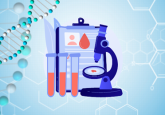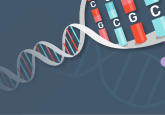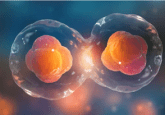Poverty and health: could epigenetics play a part?

A recent study reveals socioeconomic status and health prospects could be linked by epigenetic imprinting.
Socioeconomic status and health prospects have been closely associated for some time. Previous theories have established the obvious impacts of poverty on nutrition, stress and available exercise time as the leading drivers for this correlation. However, a recent study led by Thomas McDade of Northwestern University (IL, USA) has found that poverty can, in fact, leave impressions on DNA, implementing large scale epigenetic changes on the human genome.
Using the Illumina HumanMethylation450 Bead Chip, the researchers analyzed the DNA methylation patterns in the leukocytes of 489 study participants. The socioeconomic status (SES) of each participant was established at infancy and adulthood, through an assessment of the participants’ income, assets and education. Genome-wide analysis was then used to identify CpG sites (sequences of DNA frequently found in the promoter region of genes) whose methylation patterns were significantly affected by SES.
After adjusting the results from the genome-wide analysis, McDade and his team found that over 2500 sites in more than 1500 genes were significantly affected in their methylation status by SES. A low SES led to the increased methylation of 1777 sites and decreased methylation at 769 when compared to high SES.
“This pattern highlights a potential mechanism through which poverty can have a lasting impact on a wide range of physiological systems and processes,”
To further understand these results the team conducted functional enrichment analysis to identify the function of each of the genes most commonly affected. This examination found that the genes most commonly affected were associated with skeletal development, immune function and nervous system development. “This pattern highlights a potential mechanism through which poverty can have a lasting impact on a wide range of physiological systems and processes,” opined McDade.
Commenting on his results, McDade stated that “The wide scope of the associations between SES and DNAm is consistent with the wide range of biological systems and health outcomes we know to be shaped by SES.”
Next, the researchers will need to establish the exact implications of the alternative methylation patterns at each site. “These are the areas we’ll be focusing on to determine if DNA methylation is indeed an important mechanism through which socioeconomic status can leave a lasting molecular imprint on the body, with implications for health later in life,” explained McDade.





